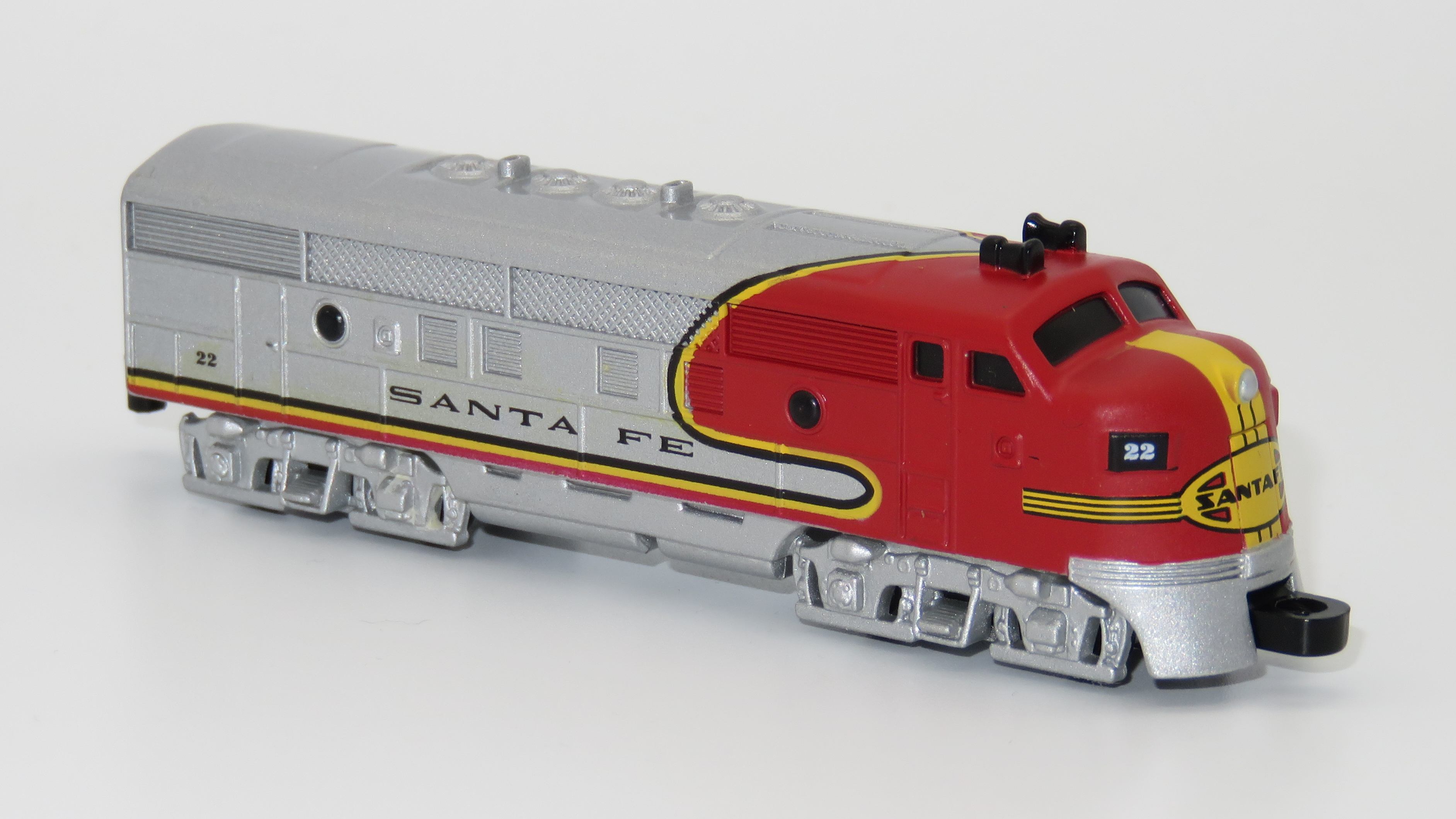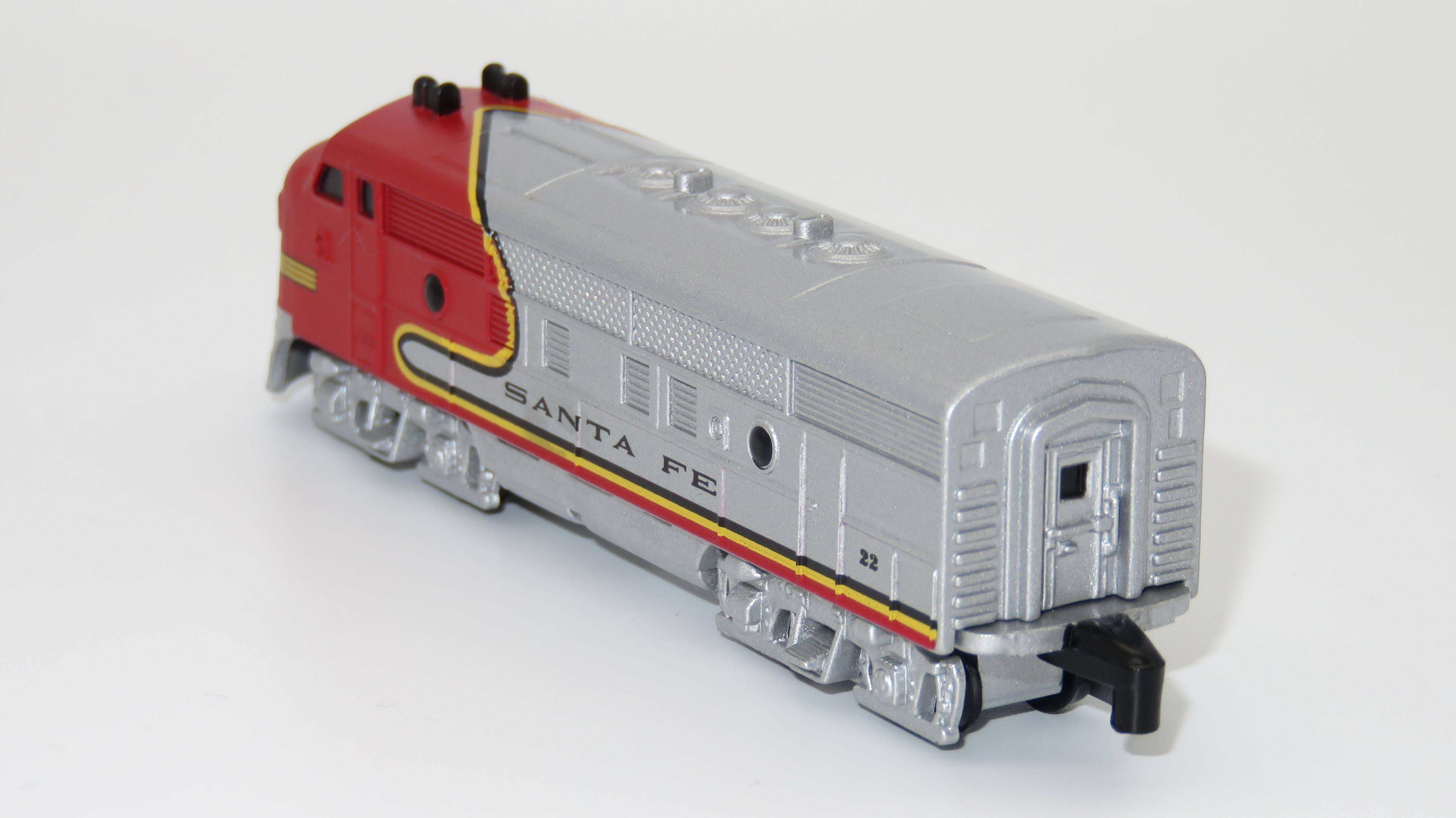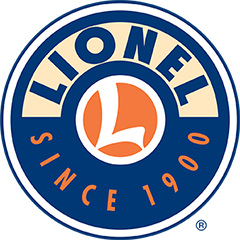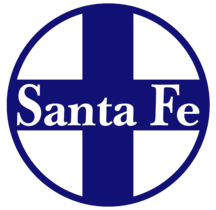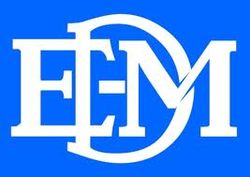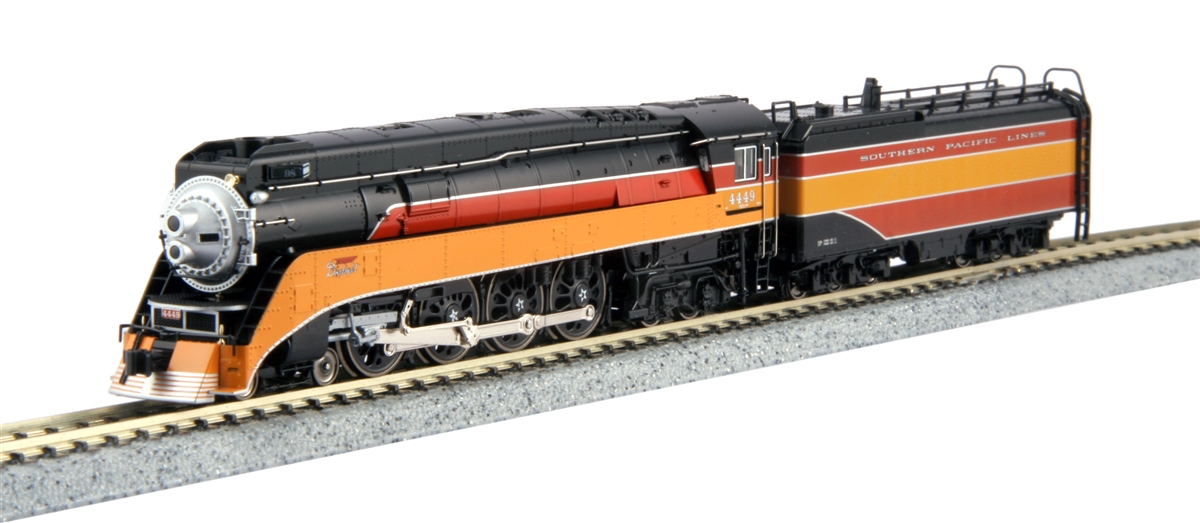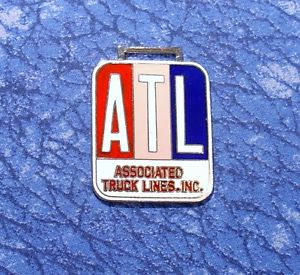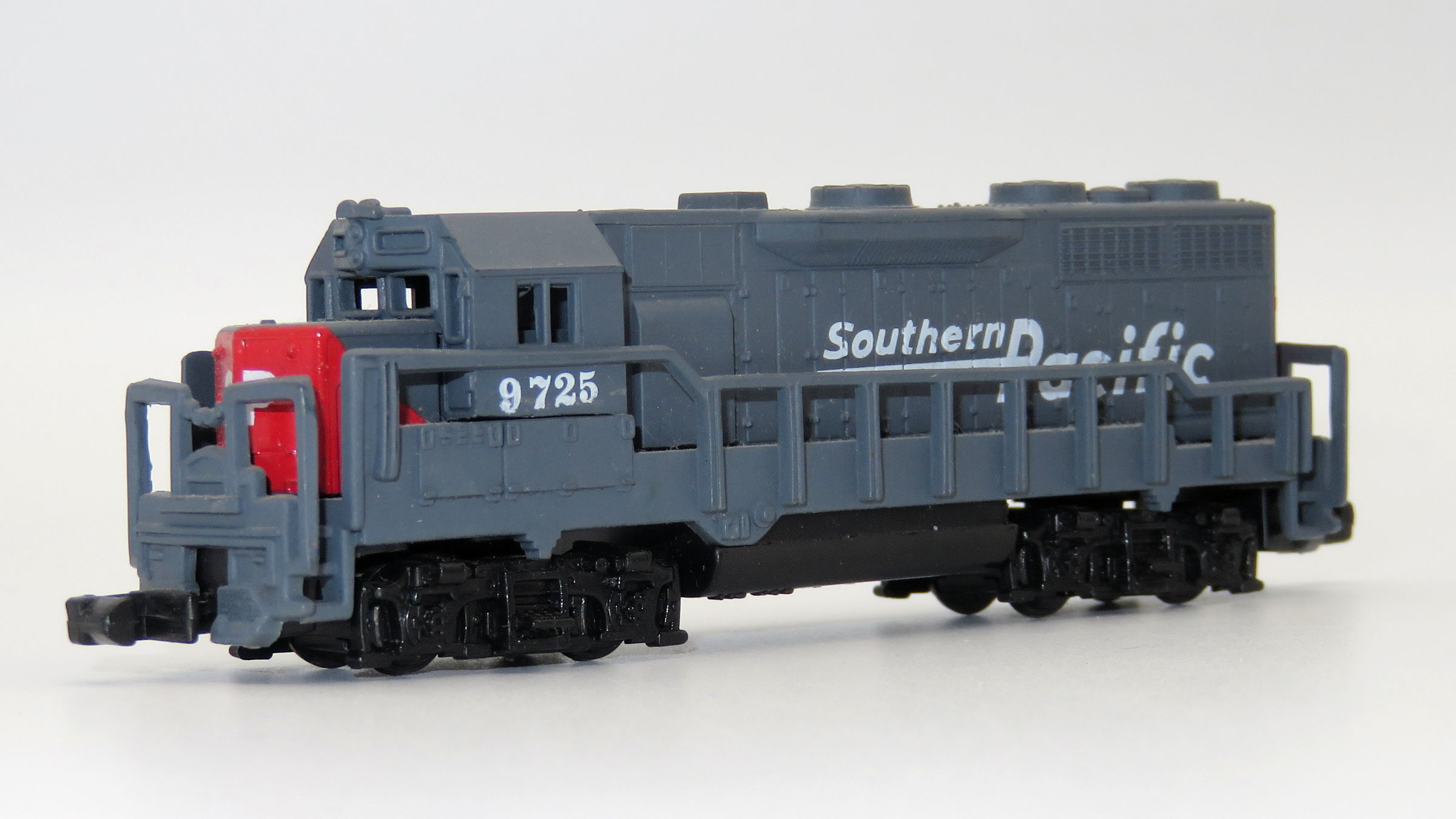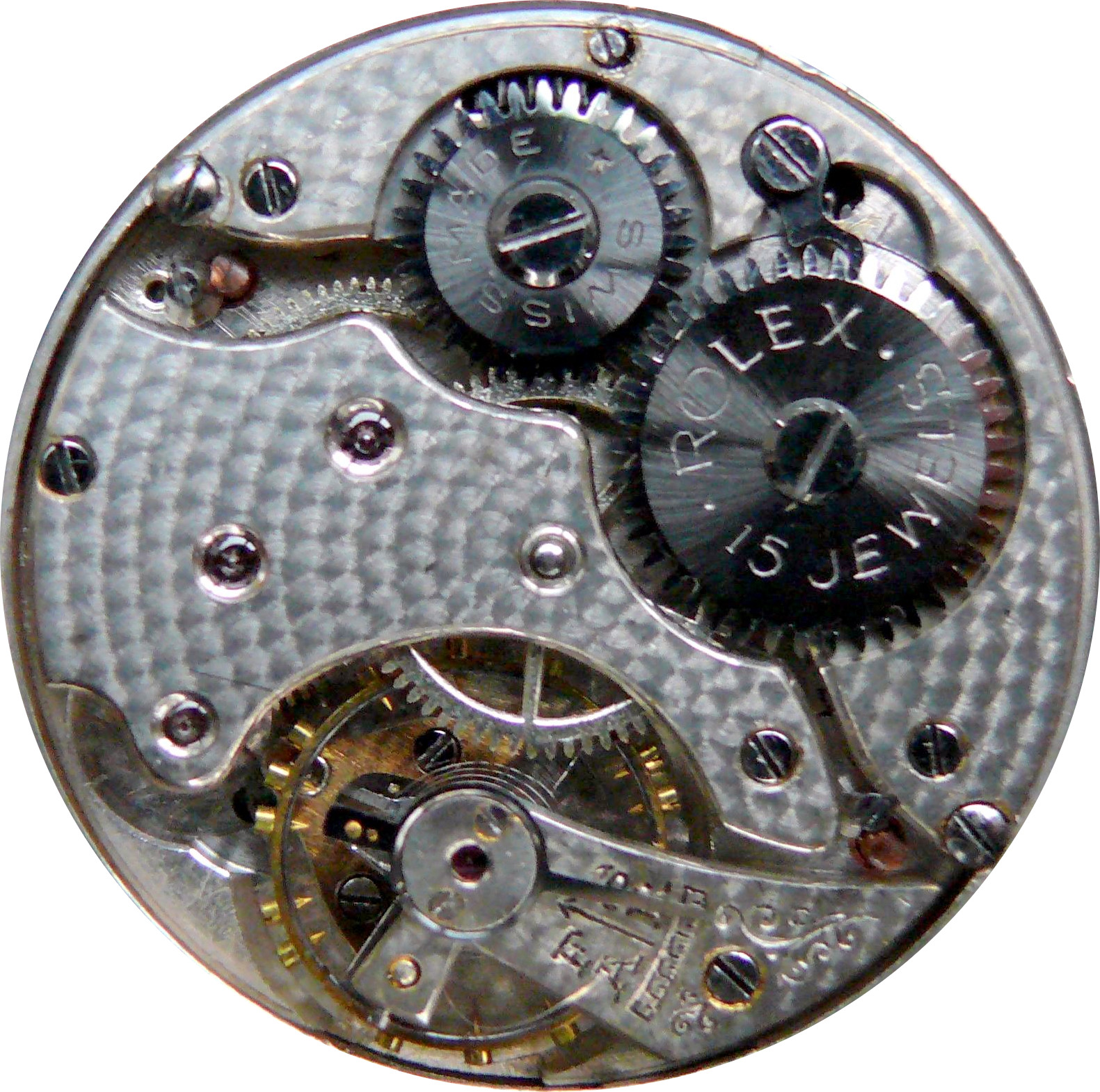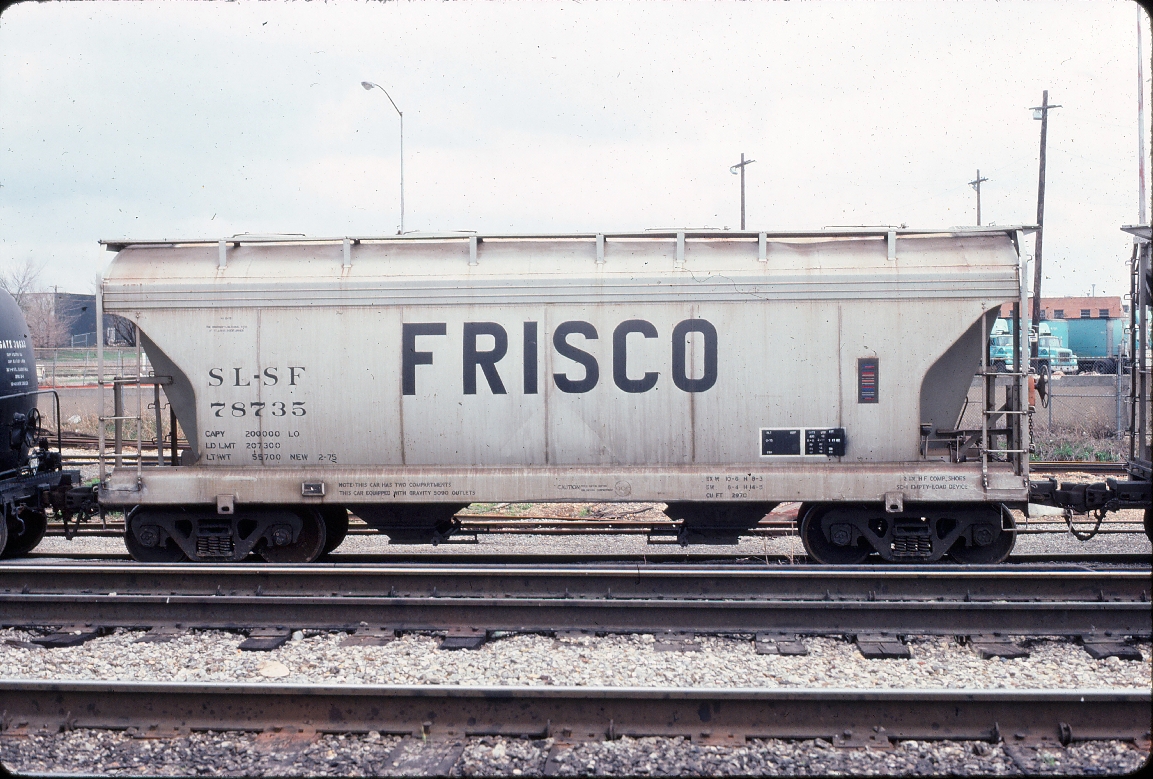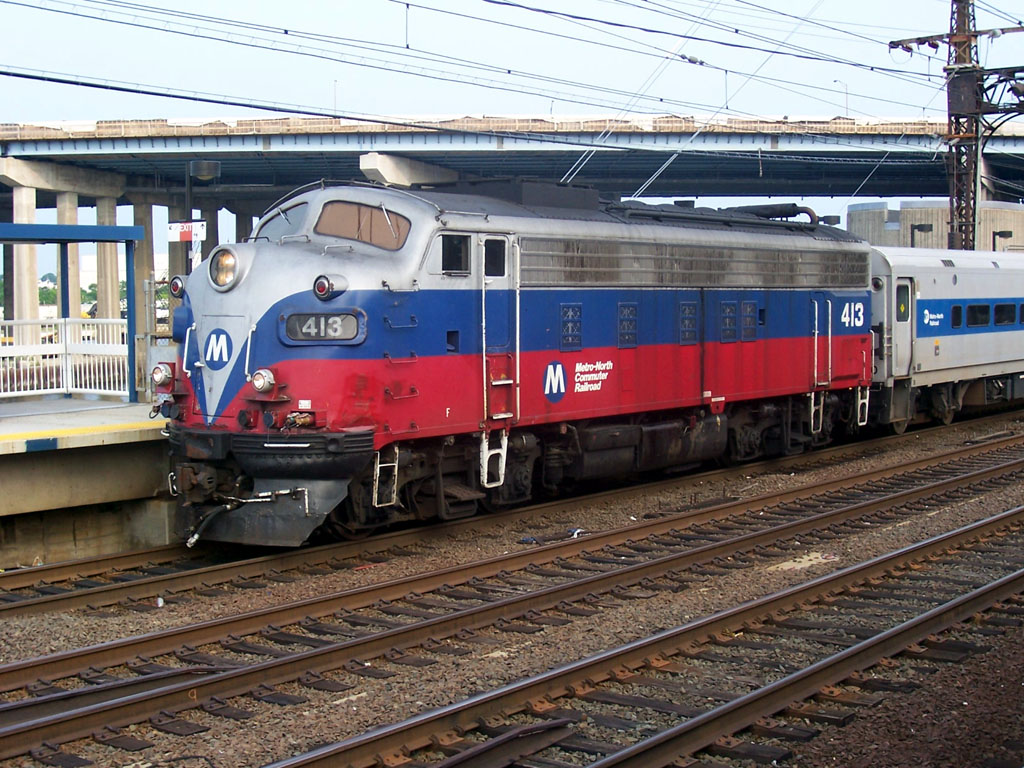Lionel - 7-95001 - Locomotive, Diesel, EMD F3 - Santa Fe - 22
Click to see the details
market
Click to see the details
history
| Stock Number | 7-95001 |
| Original Retail Price | $4.95 |
| Brand | Lionel |
| Manufacturer | Lionel |
| Body Style | Lionel Big Rugged Trains |
| Prototype Vehicle | Locomotive, Diesel, EMD F3 (Details) |
| Road or Company Name | Santa Fe (Details) |
| Road or Reporting Number | 22 |
| Paint Color(s) | Red, Silver, Yellow, Black |
| Print Color(s) | Black |
| Paint Scheme | Warbonnet |
| Coupler Mount | Body-Mount |
| Wheel Type | Injection Molded Plastic |
| Wheel Profile | Deep Flange |
| DCC Readiness | Dummy Engine |
| Release Date | 1999-01-01 |
| Item Category | Locomotives |
| Model Type | Diesel |
| Model Subtype | EMD |
| Model Variety | F3A |
| Prototype Region | North America |
| Prototype Era | NA Era III: Transition (1939 - 1957) |
| Scale | 1/160 |
| UPC/GTIN12 Number | 023922950017 |
Specific Item Information:
The model of the EMD F3A of the Santa Fe was produced by Lionel in 1999 in the scale 1:160. It is part of the Lionel Big, Rugged Trains in the Classic Series. The F3A comes in a blister pack with a hanger and a description of the model. The low fans and the lower ventilation openings indicate the F3 phase III or IV, the upper ventilation grilles are a mixture of phases II to IV.
The non-motorized model is equipped with fixed trucks and plastic wheel sets. The windows have a black background. The simple hook couplings are heavily oversized, as are the two horns. The detailing of the die-cast metal housing and the plastic trucks is very basic and partly simplified. Painting and lettering are attractively designed. The front headlight is only painted on.
The non-motorized model is equipped with fixed trucks and plastic wheel sets. The windows have a black background. The simple hook couplings are heavily oversized, as are the two horns. The detailing of the die-cast metal housing and the plastic trucks is very basic and partly simplified. Painting and lettering are attractively designed. The front headlight is only painted on.
Model Information:
Lionel Big, Rugged Trains for Kids
Lionel proudly offers six unique locomotives for the young or young at heart. Each piece is die-cast and detailed with authentic decoration and moving wheels. And because these are RUGGED TRAINS, they’ll stand up to the roughest of play and are not too BIG put in your pocket!
These non-motorized models are equipped with fixed trucks and plastic wheel sets.
Lionel proudly offers six unique locomotives for the young or young at heart. Each piece is die-cast and detailed with authentic decoration and moving wheels. And because these are RUGGED TRAINS, they’ll stand up to the roughest of play and are not too BIG put in your pocket!
These non-motorized models are equipped with fixed trucks and plastic wheel sets.
Prototype History:
The EMD F3 was a 1,500-horsepower (1,100 kW) B-B freight- and passenger-hauling diesel locomotive produced between July 1945 and February 1949 by General Motors’ Electro-Motive Division. Final assembly was at GM-EMD's La Grange, Illinois plant. A total of 1,111 cab-equipped lead A units and 696 cabless booster B units were built.
The F3 was the third model in GM-EMD's highly successful F-unit series of cab unit diesel locomotives, and it was the second most produced of the series. The F3 essentially differed from the EMD F2 in that it used the “new” D12 generator to produce more power, and from the later EMD F7 in electrical equipment. Some late-model F3's had the same D27 traction motors, along with the heavier-duty electrical cables, used in the F7, and were referred to as model F5 by EMD's Engineering Department.
From Wikipedia
Read more on American-Rails.com
The F3 was the third model in GM-EMD's highly successful F-unit series of cab unit diesel locomotives, and it was the second most produced of the series. The F3 essentially differed from the EMD F2 in that it used the “new” D12 generator to produce more power, and from the later EMD F7 in electrical equipment. Some late-model F3's had the same D27 traction motors, along with the heavier-duty electrical cables, used in the F7, and were referred to as model F5 by EMD's Engineering Department.
From Wikipedia
Read more on American-Rails.com
Road Name History:
The Atchison, Topeka and Santa Fe Railway (reporting mark ATSF), often abbreviated as Santa Fe or AT&SF, was one of the larger railroads in the United States. Chartered in February 1859, the railroad reached the Kansas-Colorado border in 1873 and Pueblo, Colorado, in 1876. To create a demand for its services, the railroad set up real estate offices and sold farm land from the land grants that it was awarded by Congress. Despite the name, its main line never served Santa Fe, New Mexico, as the terrain was too difficult; the town ultimately was reached by a branch line from Lamy.
The Santa Fe was a pioneer in intermodal freight transport, an enterprise that (at one time or another) included a tugboat fleet and an airline (the short-lived Santa Fe Skyway). Its bus line extended passenger transportation to areas not accessible by rail, and ferryboats on the San Francisco Bay allowed travelers to complete their westward journeys to the Pacific Ocean. The ATSF was the subject of a popular song, Harry Warren & Johnny Mercer's "On the Atchison, Topeka and the Santa Fe", written for the film, The Harvey Girls (1946).
The railroad officially ceased operations on December 31, 1996, when it merged with the Burlington Northern Railroad to form the Burlington Northern & Santa Fe Railway.
Read more on Wikipedia.
The Santa Fe was a pioneer in intermodal freight transport, an enterprise that (at one time or another) included a tugboat fleet and an airline (the short-lived Santa Fe Skyway). Its bus line extended passenger transportation to areas not accessible by rail, and ferryboats on the San Francisco Bay allowed travelers to complete their westward journeys to the Pacific Ocean. The ATSF was the subject of a popular song, Harry Warren & Johnny Mercer's "On the Atchison, Topeka and the Santa Fe", written for the film, The Harvey Girls (1946).
The railroad officially ceased operations on December 31, 1996, when it merged with the Burlington Northern Railroad to form the Burlington Northern & Santa Fe Railway.
Read more on Wikipedia.
Brand/Importer Information:
The original Lionel Corporation was founded in 1900 by Joshua Lionel Cowen and Harry C. Grant in New York City. By the end of World War I, Lionel was one of three major U.S. toy train manufacturers. After World War II, Lionel replaced their original product line with more realistic trains and concentrated exclusively on O-gauge trains. Lionel Corporation sold the rights to manufacture trains to General Mills in 1969. it was subsequently purchased in 1986 by businessman Richard P. Kughn, forming Lionel Trains, Inc. in 1986. The Martin Davis Investment Group (Wellspring) bought Lionel Trains, Inc. in 1995 and renamed it Lionel, LLC.
According to its reorganization papers filed as part of its bankruptcy plan on May 21, 2007, about 95% of the company's sales come from O gauge trains. The plan estimated that about US$70 million worth of O gauge trains are sold each year, and that Lionel accounts for about 60% of that market, making it the largest manufacturer of O gauge trains.
From Wikipedia
According to its reorganization papers filed as part of its bankruptcy plan on May 21, 2007, about 95% of the company's sales come from O gauge trains. The plan estimated that about US$70 million worth of O gauge trains are sold each year, and that Lionel accounts for about 60% of that market, making it the largest manufacturer of O gauge trains.
From Wikipedia
Item created by: klausnahr
on 2020-08-04 10:25:23
Last edited by: klausnahr on 2024-08-30 09:44:17
If you see errors or missing data in this entry, please feel free to log in and edit it. Anyone with a Gmail account can log in instantly.
Last edited by: klausnahr on 2024-08-30 09:44:17
If you see errors or missing data in this entry, please feel free to log in and edit it. Anyone with a Gmail account can log in instantly.


